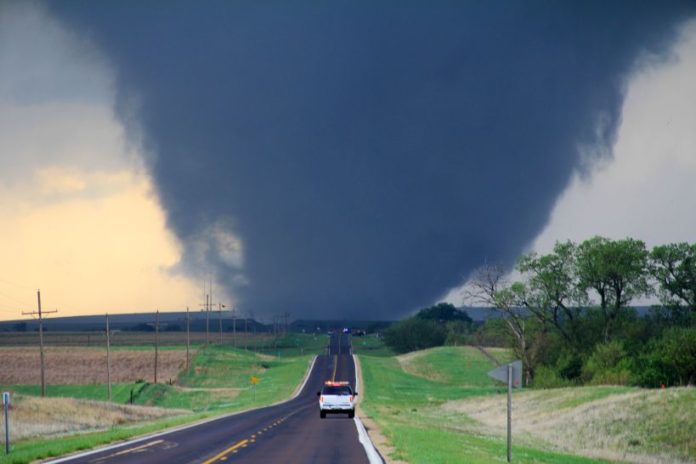Tornadoes are one of the most dangerous forms of natural disaster, particularly for how they can form just about anywhere if the right conditions are met. What those conditions are, though, has become a bit more clear in ways we never expected.
Science News reports on a study done by atmospheric scientist Jana Houser from Ohio University. At a December 13 conference of the American Geophysical Union, she and her colleagues discussed their findings regarding how tornadoes form; specifically, how they might begin their lives on the ground rather than in the air.
Exactly how a tornado is made at the moment of formation has always been a bit murky. While the mechanics of how tornadoes form is more or less understood (supercell thunderstorms shift a cold front over a warm front during high winds to create a cyclone), the short time it takes for them to form of typically less than a minute has made it difficult to observe the act itself.
Houser’s team finally managed to break that curse, though. By mounting a rapid-scanning Dopplar radar to a truck and chasing storms that met the right conditions for tornado formation in El Reno, Oklahoma, they were able to observe the formation of four whole tornadoes during their study from 2011 onward.
One particularly strong storm during 2011 marked a first in terms of observed weather phenomena, giving the first hints that tornadoes may not actually start at high elevations and spiral downwards. Instead, this storm was found to form on multiple levels at once before combining together into a funnel.
Another from 2013 was even more striking, as it was found to have created a funnel at only 20 meters above the ground, amateur video showing that this had occurred even before the radar had picked it up.
While these findings are compelling, some do request caution in applying the results to all storms. More research is likely to be necessary before anyone can make definitive accusations about the nature of tornadogenesis.
Even so, this does make for a major step forward in our understanding of storms, especially in a time when tornadoes are becoming more frequent and longer lasting. By better understanding how and where they form, it will give emergency services and people in the path of the storm more time to get to safety before things go bad, potentially saving hundreds and thousands of lives.









